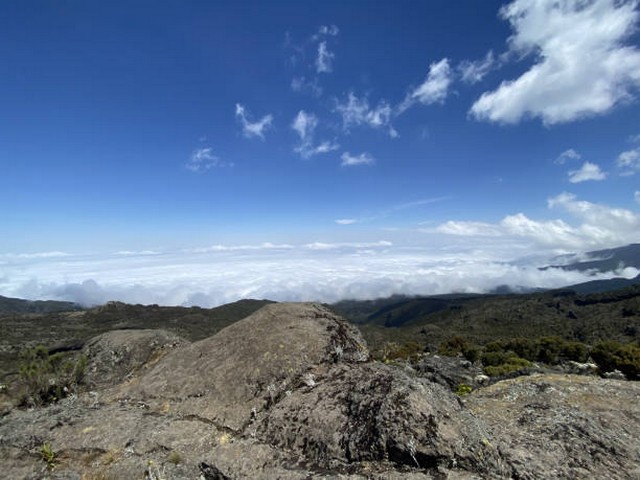How To Photograph Wildlife Near Kilimanjaro
Welcome to the majestic world where wildlife roams free under the shadow of Africa’s highest peak, Mount Kilimanjaro. Whether you’re a seasoned wildlife photographer or a nature lover with a camera, capturing the essence of Kilimanjaro’s diverse fauna is an experience that not only yields stunning photographs but also unforgettable memories. Today, we at Kilimanjaro Centre for Trekking and Ecotourism (KCTE) are excited to share essential tips on how to photograph wildlife near Kilimanjaro. Embrace your cameras, and let’s dive into the wild, picturesque landscapes of Tanzania!
Understanding the Best Times for Wildlife Photography
The Golden Hours
Just as Kilimanjaro peaks glimmer at dawn and dusk, so does the opportunity to capture the wildlife in the most magical light. The golden hours—shortly after sunrise and just before sunset—provide soft, diffused lighting which helps in capturing the rich textures of the landscape and the vibrant hues of the wildlife.
Wildlife Activity Peaks
Animals are most active during the cooler parts of the day. Early mornings can be your gateway to capturing stirring scenes of animal life as they start their day. Late afternoons are equally promising, with animals gathering at watering holes, presenting a perfect scenario for dynamic wildlife photography.
Choosing the Right Gear
Cameras and Lenses
A DSLR or mirrorless camera with a telephoto lens (at least 200mm) is ideal for wildlife photography. These lenses help maintain a safe distance from wild animals while capturing detailed shots. Image stabilization and a higher ISO range are beneficial features as they help shoot in varying light conditions.
Supporting Equipment
Consider a sturdy tripod or a monopod for stability, especially when using long lenses which can be heavy and difficult to hold steady for long periods. Additionally, bring along extra batteries and memory cards. You wouldn’t want to miss a perfect shot because you ran out of power or storage!
Field Techniques for Captivating Wildlife Photography
Patience and Perseverance
Wildlife photography near Kilimanjaro requires patience. Animals are unpredictable, and capturing the perfect shot might take time. Be prepared to wait and watch quietly. Sometimes, the most breathtaking photograph is gifted to the most patient photographer.
Composition and Framing
Use the rule of thirds to create interesting and balanced compositions. Positioning the animal off-center can make the image more dynamic. Also, be mindful of the background. A clutter-free, natural backdrop can significantly enhance the impact of your subject.
Respect for Nature
While your focus is on photography, it is crucial to respect the wildlife and their habitat. Maintain a safe distance and avoid actions that could stress or threaten the animals. Our guides at KCTE are trained to ensure both your safety and the well-being of the surrounding wildlife.
Ethical Wildlife Photography Practices
Adhering to ethical practices is not just an option but a responsibility. At KCTE, we stress the importance of minimizing environmental impact. This includes sticking to established paths, keeping noise to a minimum, and never feeding or attempting to attract wildlife for an easier shot.
Post-Processing Tips
Post-processing is a powerful tool to enhance your wildlife photographs. Adjusting exposure, contrast, and sharpness can help highlight the subject. However, keep alterations minimal to preserve the natural beauty and authenticity of the wildlife encounters.
Why Choose KCTE for Your Kilimanjaro Adventure?
Booking your Kilimanjaro climbing adventure with Kilimanjaro Centre for Trekking and Ecotourism (KCTE) not only assures you of top-notch safety and comfort but also provides an enriched experience with our knowledgeable guides. Our guides are passionate about wildlife and are eager to share the best spots and moments for photography. With KCTE, you’re not just visiting Kilimanjaro; you’re experiencing it with those who call it home.
Frequently Asked Questions
What is the best season to photograph wildlife near Kilimanjaro?
The dry seasons, from late June to October and from January to February, are ideal as animals tend to congregate around water sources, making them easier to locate and photograph.
Can beginners participate in wildlife photography near Kilimanjaro?
Absolutely! Kilimanjaro and its surrounding ecosystems offer a variety of photographic opportunities for all skill levels. KCTE provides tailored guidance to help beginners get the most out of their experience.
Are there any specific safety rules to follow while photographing wildlife?
Yes, always listen to your guide’s instructions. Keep a safe distance from the animals and stay in your vehicle or designated areas when in wildlife reserves.
How can I ensure my photography equipment is safe from the elements while photographing near Kilimanjaro?
Protective gear such as camera bags, lens covers, and silica gel packs to absorb moisture are essential. KCTE guides can also offer advice on handling equipment in varying weather conditions.
Conclusion: Capture the Wild Heart of Kilimanjaro with KCTE
Embrace the challenge of wildlife photography near Kilimanjaro with the expertise of Kilimanjaro Centre for Trekking and Ecotourism. Whether it’s the serene elephants grazing against the backdrop of Mount Kilimanjaro or the energetic play of monkeys in the trees, each photograph you take will be a testament to the beauty and spirit of Tanzania’s wilderness.
Ready to capture the untamed beauty of Kilimanjaro’s wildlife? Book your trekking adventure with KCTE today and take home more than just photographs—take home stories waiting to be told.




